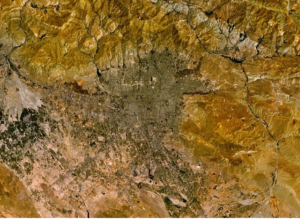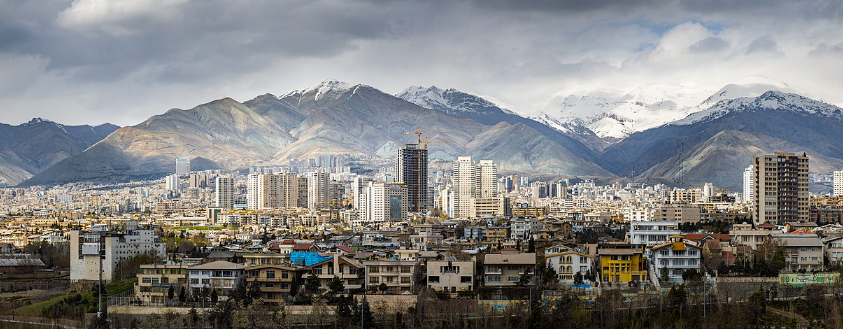By Kian Sharifi
Over 40 cities across Iran, including Tehran, are facing routine water rationing and prolonged supply interruptions.
In some areas, households and businesses endure hours-long daily outages as officials scramble to take emergency measures.
The roots of the crisis lie in a mix of prolonged drought and drastically reduced rainfall, soaring temperatures, excessive extraction from aquifers, and years of inefficient management — especially in agriculture.
While urgent water transfer projects and aggressive conservation campaigns have been launched, the scale of the problem is nationwide, affecting both urban centers and rural communities.
President Masud Pezeshkian has acknowledged the scale of mismanagement that contributed to the crisis, arguing that basic changes are now critical to the nation’s future.

Teheran view from space (wikipedia)
He’s also referenced the worsening water crisis to again broach the subject of moving the country’s capital, saying the continued survival of Tehran as the capital is no longer possible.
Why It Matters: Iran has entered its fifth consecutive year of drought, with rainfall in several provinces, including Sistan-Baluchistan, Hormozgan, Bushehr and Khuzestan, dropping by more than 50 percent.
The prolonged dry spell has severely strained water supplies, with the latest reports indicating that reservoirs feeding Tehran’s dams are now at just 14 percent of their total capacity.
Pezeshkian’s government last year floated an ambitious idea: relocating the nation’s capital to the Makran coast on the shores of the Sea of Oman. He even appointed his campaign chief, Ali Abdolalizadeh, as a special envoy for maritime economy development.
However, following widespread criticism, the plan has been quietly shelved. Analysts warn that the Makran region itself remains underdeveloped, with large areas still lacking even basic water pipelines.
What’s Being Said: Azam Bahrami, a water and environmental expert based in the Netherlands, says agricultural practices need to change in Iran as part of broader reforms to ensure efficient water use.
She told RFE/RL’s Radio Farda that agriculture accounts for up to 90 percent of Iran’s water use.
Water officials say nearly half of Iran’s provinces are now officially water-stressed and that current supplies simply don’t match demand.
Expert Opinion: The decisive factor is the ruling establishment, because it is the authorities who invest, introduce new technologies, monitor progress, and strengthen society to help it endure climate change and long-term drought, Bahrami told Radio Farda.
_____________________________________
Source: Radio Free Europe/Radio Liberty, Tehran On The Brink: Can Iran Survive Its Water Crisis?, July 25, 2025. By Kian Sharifi (Link)
